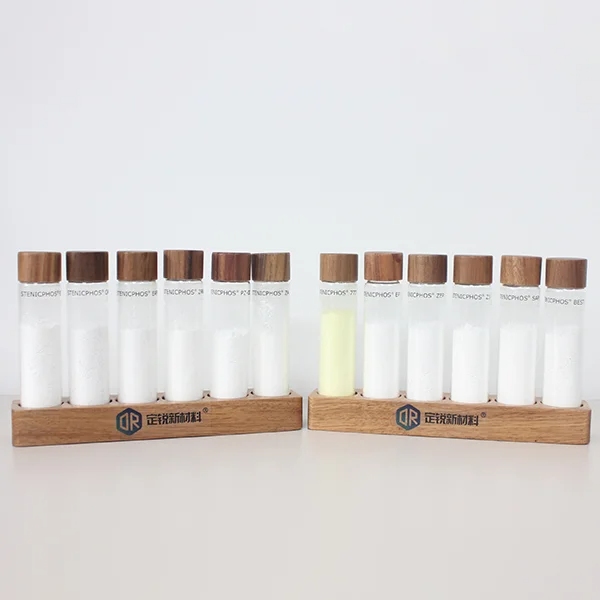The construction industry is a pivotal sector globally, driving economic growth and shaping urban landscapes. However, one persistent challenge faced by this industry is the deterioration of structures due to corrosion. Anti-corrosion pigments play a crucial role in mitigating this issue, ensuring the longevity and safety of buildings and infrastructure.

The Role of Corrosion in Construction
Impact on Structural Integrity
Corrosion is a natural electrochemical process where metals react with their environment, leading to the gradual deterioration of materials. In the context of construction, this can severely compromise the structural integrity of buildings and infrastructure. Rusting steel beams, for instance, lose strength and stiffness, posing significant safety risks.
Economic Costs
The economic implications of corrosion are substantial. Repairs and replacements due to corrosion-related damage can be costly, often exceeding the initial investment in corrosion prevention measures. Additionally, downtime and disruption during renovation works can further impact project timelines and budgets.
The Importance of Anti-Corrosion Pigments
Enhancing Durability
Anti-corrosion pigments are specifically formulated to protect metallic surfaces from environmental aggression. They form a protective barrier that minimizes oxygen and moisture penetration, thereby slowing down the corrosion process. This enhances the durability of structures, reducing maintenance requirements and extending their lifespan.
Environmental Benefits
The use of anti-corrosion pigments also contributes to environmental sustainability. By prolonging the life of structures, they reduce the frequency of demolitions and new constructions, thereby lowering carbon emissions associated with these activities. Furthermore, many modern anti-corrosion pigments are developed from eco-friendly materials, minimizing their environmental footprint.
Applications of Anti-Corrosion Pigments in Construction
Steel Structures
Steel is a cornerstone material in construction, known for its strength and versatility. However, it is highly susceptible to corrosion. Anti-corrosion pigments are integral in paints and coatings used on steel structures, such as bridges, skyscrapers, and industrial facilities. These pigments provide a robust protective layer, shielding steel from rust and maintaining its structural integrity.
Concrete Reinforcement
Reinforced concrete is another common construction material, combining the compressive strength of concrete with the tensile strength of steel rebar. The steel rebar within concrete is prone to corrosion, particularly in aggressive environments like coastal areas or where chloride-laden water is present. Anti-corrosion pigments in protective coatings for rebar can significantly delay corrosion, preserving the structural performance of reinforced concrete structures.
Aluminum and Other Metals
While aluminum corrodes differently from steel, forming a protective oxide layer, this process can weaken the material over time. Anti-corrosion pigments are used in coatings for aluminum to enhance its resistance to environmental factors, particularly in architectural applications like cladding and roofing. Similarly, they are employed to protect other metallic components in buildings, such as copper roofing and stainless steel trim.
Wood Preservation
While corrosion is primarily associated with metals, wooden structures can also suffer from decay caused by fungi and insects. Anti-corrosion pigments, particularly those with biocidal properties, are incorporated into wood preservatives to protect against these threats. This extends the useful life of wooden elements in buildings, such as beams, joists, and decking.
Innovations in Anti-Corrosion Pigments
Advanced Formulations
The construction industry is witnessing advancements in anti-corrosion pigment formulations. Newer generations of pigments offer enhanced durability, improved UV resistance, and better adhesion properties. Some formulations incorporate nanotechnology, utilizing nanoscale particles to create more effective protective barriers.
Sustainable Options
In response to the growing emphasis on sustainability, manufacturers are developing anti-corrosion pigments from renewable and recycled materials. These eco-friendly alternatives offer comparable performance to traditional pigments while reducing environmental impact.
Conclusion
Anti-corrosion pigments are indispensable in the construction industry, playing a pivotal role in safeguarding structures against the ravages of corrosion. Their importance lies in enhancing the durability and safety of buildings and infrastructure, while also contributing to environmental sustainability. With ongoing innovations in pigment formulations and a growing focus on sustainability, the future of anti-corrosion protection in construction looks promising. By integrating these advanced pigments into construction practices, the industry can mitigate the economic and safety risks associated with corrosion, ensuring the long-term resilience of our built environment.
www.draycolor.com
Zhejiang D-Ray Technology Co., Ltd
